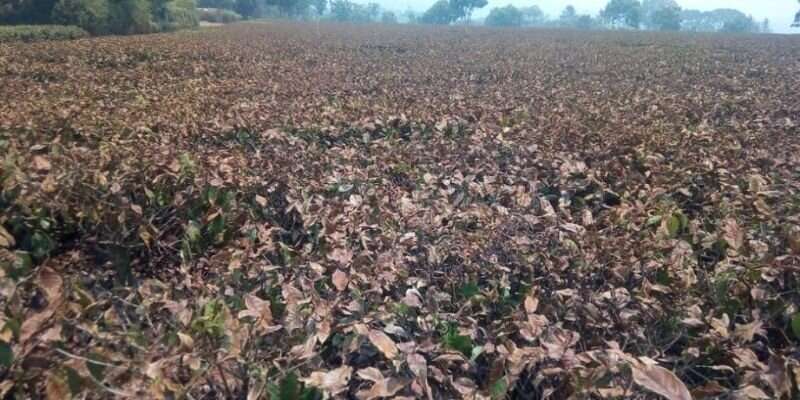Scorched tea in Mulanje in October 2019. Credit: WeatherChasers
Researchers in the UK and Africa have teamed up to help tea producers better understand future climate risks so that they can reduce crop damage caused by climate change.
Kenya and Malawi produce more than half the tea Britons consume and the crop makes up about 7% of Malawi's GDP and 4% of Kenya's. In recent years frosts followed by high daytime temperatures have reduced yields, as have longer and more intense dry spells.
The plants are particularly sensitive to climate and the research suggests that without interventions aimed at specific locations tea production will decline in Kenya and Malawi by the 2050s—and fall significantly further by the 2080s.
Working with producers and their representatives in both countries, a University of Leeds-led research team assessed climate factors affecting the growth and quality of tea at nine locations. Their results are published in Climate Risk Management.
Project lead Professor Andy Dougill said: "We combined long-term climate observations and the latest climate model projections to predict micro-climates for nine areas over the coming decades. The same methodology could now be applied to other tea-producing areas of the world and adapted for other cash crops."
Using producers' knowledge of how tea plants at each location respond to specific weather conditions, the team was able to assess how those weather conditions are predicted to change in the future in terms of the range of possible micro-climates for each site. This has helped to provide tea producers with new information to guide them on how best to adapt to future climates by both targeted interventions and plant breeding programs. Lead author Dr. Neha Mittal, from the University's School of Earth and Environment, said: "Our study suggests that all nine locations will see substantial increases in heatwave days but significant declines in the number of cold nights by the 2050s. However, the impact will vary dramatically from location to location. Some sites will see only small rises and others might see increases of over 100 heatwave days per year. That is why this new, localized, site-specific approach is so important—it enables climate-change informed investments."
Project partner Dr. David Mkwambisi, of Malawi University of Science & Technology, said: "By working in partnership with producers and local universities we've developed ideas for how major tea producers and local people can plan for future climate conditions. These include more climate resilient cultivars, crop diversification, good agricultural practices, and afforestation. Localized climate change projections will give tea producers the information they need for their long-term decision making.
We need to act swiftly and to regularly review decisions about the best response in each area—not least because the tea bush has a life cycle of around 100 years."
The study used a very high-resolution convection-permitting model of Earth's climate, CP4-Africa—the first of its type for Africa—which was developed by the Met Office, the UK's national meteorological service. This climate simulation equipment picks up small-scale processes in the atmosphere—including air currents which are involved in many damaging weather events, especially in mountainous areas where tea is grown.
Co-author Dr. Dave Rowell from the Met Office said: "The unprecedented detail provided by this new model, combined with traditional modeling and the collation of observations on local weather characteristics, has allowed us to get a better handle on local climate risks several decades into the future. This is critical for adaptation decisions that must be taken today, given the long life of the tea plants."
More information: Neha Mittal et al, Tailored climate projections to assess site-specific vulnerability of tea production, Climate Risk Management (2021). DOI: 10.1016/j.crm.2021.100367
Provided by University of Leeds
























